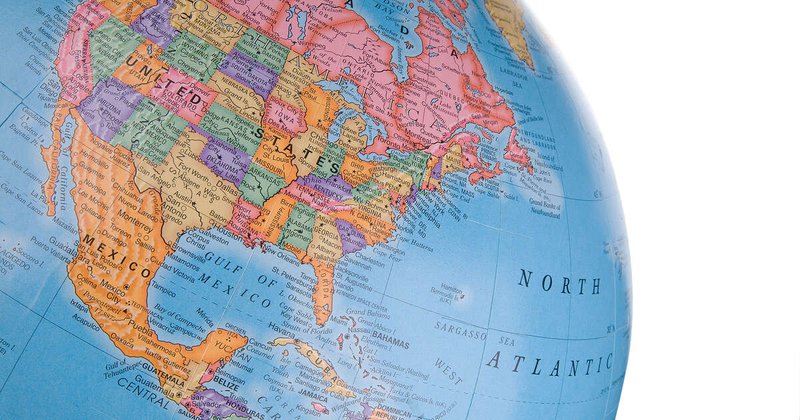A Deep Dive Into the North American Numbering Plan
Explore the history of the North American Numbering Plan (NANP), a remarkable telecommunications project that unifies 20 countries. Discover how geography and politics influence this system, with unique journeys like Mexico's path to telecommunication sovereignty.
A Deep Dive Into the North American Numbering Plan
When you dial a phone number in the United States or Canada, you're participating in one of the most successful telecommunications engineering projects of the 20th century. The North American Numbering Plan (NANP) is a remarkable system that unifies 20 countries and 25 regions under a single dialing framework—yet its story reveals how geography, politics, and national sovereignty can triumph over technological convenience.
Birth of the Revolutionary North American Numbering Plan
The year was 1947. The United States emerged victorious from the Second World War with its infrastructure intact, and yet the U.S. telecommunications landscape was a patchwork of incompatible local systems. Long-distance calls required operators at every step, making connections slow and expensive. AT&T, the telephone giant known as "Ma Bell," had a bold vision: create a unified numbering system that would allow any phone in North America to reach any other phone through direct dialing.
The solution was elegantly simple yet revolutionary. AT&T divided the continent into 86 numbering plan areas, each identified by a three-digit area code. The initial assignment was methodical, with the most populous areas receiving the easiest-to-dial codes on the rotary phones in use at the time.
The Area Code Lottery Winner
Virtually no one under the age of 40 can truly appreciate how agonizing it could be to dial certain strings of numbers on a rotary phone. This is because each digit was encoded as a series of pulses: 1 was one pulse, 2 was two pulses, and so on. The higher the digit, the farther you had to rotate the dial, and the more time it took for the dial to spin back to its starting position and send the correct number of pulses. Dialing “0” was always the slowest single digit, as it had to send ten pulses and the dial returned over the maximum distance, taking about one full second or more for just that single digit.
That’s why New York won the area code lottery with 212, which only required 5 pulses, with Chicago (312), and Los Angeles (213) tied for second with 6 pulses each. Sparsely populated South Dakota lost with 605, which required the maximum 21 clicks on a rotary dial.
The first customer-dialed long-distance call using area codes took place on November 10, 1951, when a call traveled from Englewood, New Jersey, to Alameda, California, a technological milestone that would reshape how North Americans communicated.
An Unexpected Global Expansion of the North American Numbering Plan
What began as a North American solution soon attracted interest from unexpected quarters. By 1958, AT&T had extended area code 809 to the Caribbean, beginning the NANP's transformation from a continental system to an international one. Bermuda, the British West Indies, Puerto Rico, and the Dominican Republic all shared this single area code—a arrangement that would last until the mid-1990s.
The Caribbean expansion made business sense. Many of these territories had historical telecommunications ties to North America through British colonial networks and the submarine cable systems that connected them to the mainland. For small island nations, joining the NANP meant their residents could make calls to the United States and Canada using simple domestic dialing procedures—a significant convenience in an era when international calling was complex and expensive.
As demand grew, the shared 809 area code began splitting. Bermuda became the first to receive its own code in 1994, followed by The Bahamas, Puerto Rico, and Barbados in 1995. By 1999, individual Caribbean nations had received their own area codes, with the Dominican Republic retaining the original 809.
The NANP's most recent expansion came in September 2011 when Sint Maarten joined the system with area code 721, making it the newest member of this exclusive telecommunications club.
The Mexican Exception
The most intriguing chapter in NANP history involves Mexico, a country that should logically be its cornerstone member. Despite its location squarely within the borders of North America, Mexico chose a different path; one that illustrates how national sovereignty can override technological convenience.
Mexico's relationship with the NANP began in the early 1960s with a limited experiment. Three area codes were assigned to high-traffic regions: 903 and 905 for Mexico City, and 706 for northwestern Mexico including Baja California and Mazatlán. These codes weren't intended for nationwide coverage but rather to facilitate the enormous volume of calls between Mexico and the United States, particularly in border regions where many callers lacked the equipment needed for international dialing.
For nearly three decades, this arrangement functioned adequately. Americans could call Mexican border cities and the capital using domestic dialing procedures, while Mexico maintained its sovereign telecommunications system. However, by the late 1980s, tensions began to emerge.
On February 1, 1991, Mexico made a decisive break. The country withdrew from its limited NANP participation and revoked area codes 706 and 905, leaving only 903 temporarily in service. By October 1991, Mexico had completely exited the system and established its own national numbering plan using international country code +52.
The reasons for Mexico's withdrawal were multifaceted, but in essence, the country wanted complete control over its telecommunications infrastructure, the ability to create a numbering system optimized for its geographic and demographic realities, and the flexibility to implement new technologies without coordinating with foreign entities.
The timing was also politically significant. Mexico's telecommunications modernization occurred during a period of broader economic transformation, including the negotiations that would lead to NAFTA in 1994. While Mexico was willing to integrate economically with its North American neighbors, it chose to maintain telecommunications sovereignty.
More Absent Neighbors
Mexico isn't the only North American country to remain outside the NANP system. In fact, the plan's name proves somewhat misleading when examined geographically. Greenland, despite its North American location, uses Denmark's country code +299. The French territories of Saint Pierre and Miquelon use +508, while most French Caribbean islands use +590. Cuba operates under +53, and Haiti uses +509.
Even within the Caribbean, participation isn't universal. The Dutch Caribbean presents a particularly interesting case, with Sint Maarten joining the NANP in 2011, while neighboring Curaçao and Aruba maintained separate country codes under the Netherlands.

More Than Just Numbers
Today, the NANP serves 20 countries across 25 regions, from the Arctic territories of Canada to the tropical islands of the Caribbean. The system processes billions of calls annually, enabling seamless communication across vast distances and diverse cultures, all unified under country code 1.
The plan has evolved far beyond AT&T's original vision. Modern area codes serve not just geographic regions but overlay systems in major cities, with some areas now requiring ten-digit dialing even for local calls. The system has accommodated the explosion of mobile phones, fax machines, and internet-connected devices that the 1947 planners never anticipated
Yet the NANP's story remains fundamentally one of choices, both technological and political. While Caribbean nations saw advantage in North American integration, Mexico chose a different path, valuing telecommunications sovereignty over convenience. This decision reflects deeper questions about national identity, technological independence, and the balance between integration and autonomy in an interconnected world.
The North American Numbering Plan stands as both a remarkable engineering achievement and a reminder that even the most logical technical solutions must navigate the complex realities of national sovereignty, cultural identity, and political independence. In Mexico's case, the decision to forge its own telecommunications destiny has proven successful; the country now operates a modern, efficient telephone system under its own control, serving over 130 million people with complete autonomy over its technological future.
The NANP continues to evolve, but its story illustrates an enduring truth: in telecommunications, as in all technologies, technical excellence alone cannot overcome the fundamental human desire for self-determination and national sovereignty.




